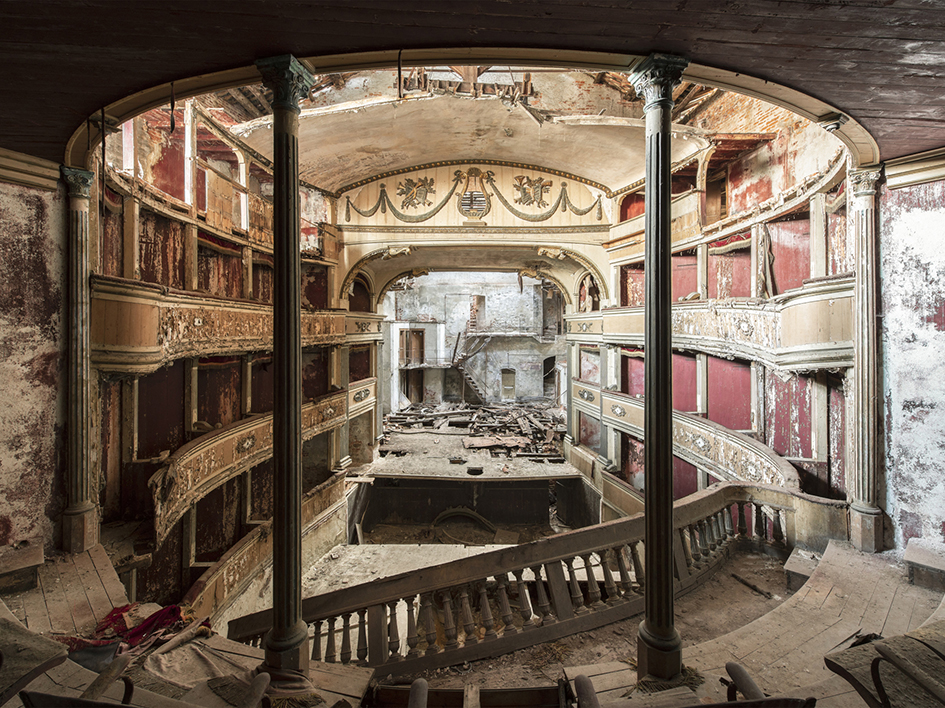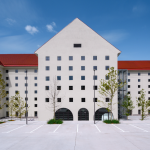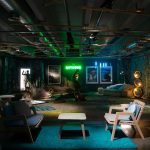english below
Æ – Come e quando inizia il tuo percorso fotografico?
NB – Inizia per gioco 15 anni fa. Ho acquistato la mia prima reflex per fotografare il pupazzo di un pinguino fermaporte in giro per il mondo. Sono totalmente autodidatta, ho imparato semplicemente sbagliando e sbagliando ancora.
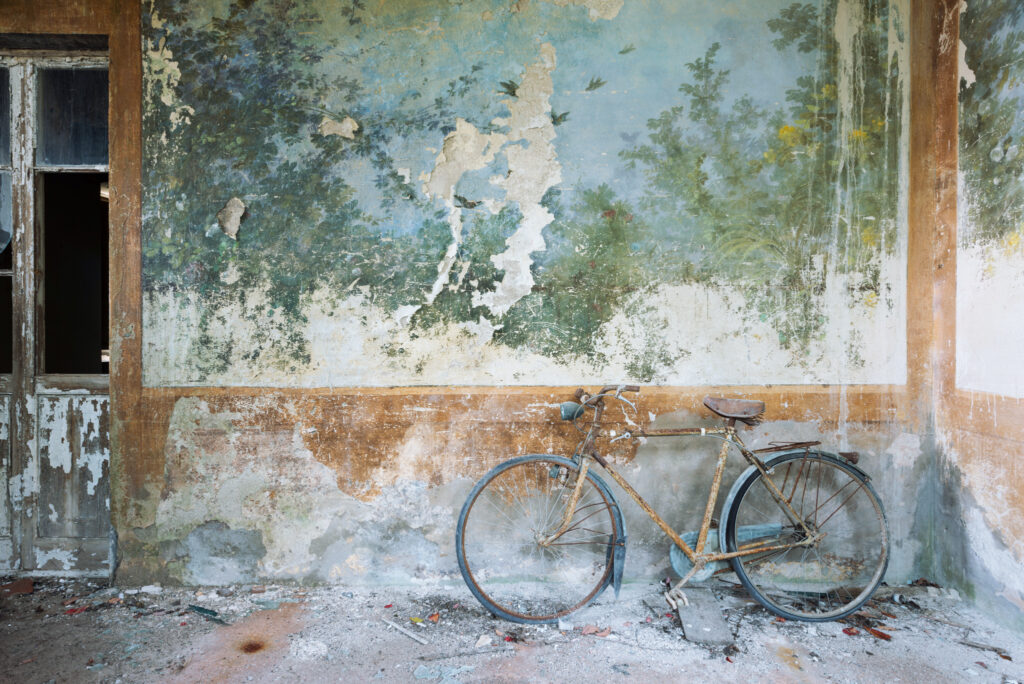
Nostalgia dell’altrove
Æ – Cosa intendi comunicare con i tuoi scatti? O meglio, quanto conta la ricerca personale e creativa e quanto la documentazione dello stato di abbandono di un patrimonio architettonico vastissimo e di valore inestimabile?
NB – Il mio intento è quello di svelare tutta questa geografia invisibile che ci circonda. Ogni giorno tutti noi passiamo con indifferenza davanti a luoghi che nascondono ancora tanta bellezza e veri e propri tesori. La documentazione è fondamentale, è proprio la storia che raccontano questi edifici ciò che mi muove.
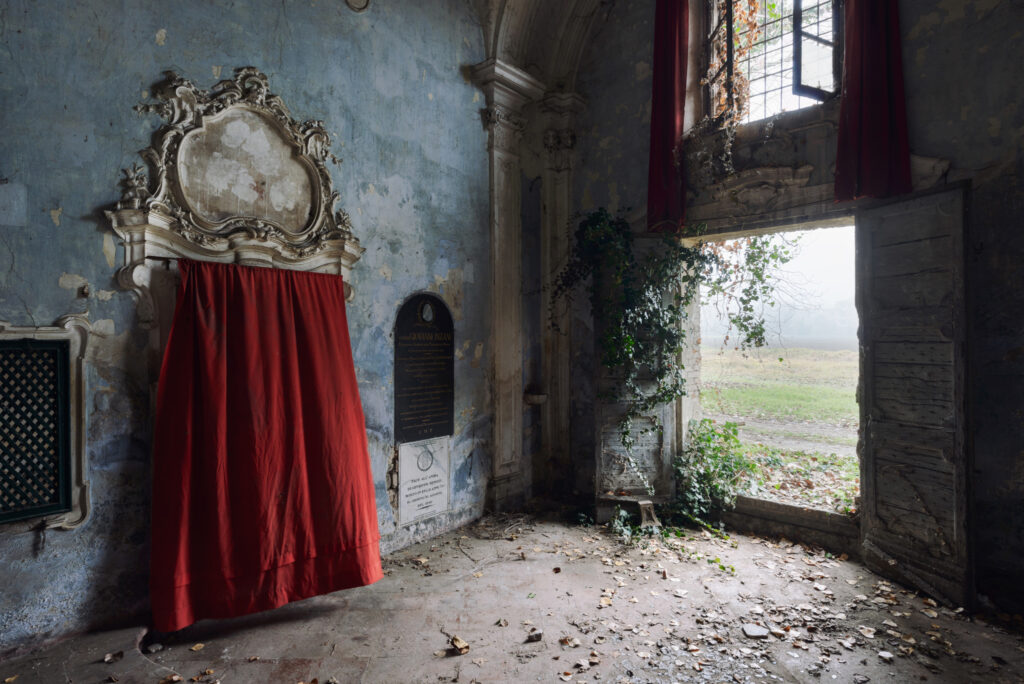
Red elegy
Æ – Come trovi i luoghi che vai poi ad imprimere in fotografia?
NB – Li trovo con ricerche ossessive sul web e con l’aiuto di alcuni contatti fidati sparsi per l’Europa. Poi capita raramente anche di imbattermi in un luogo interessante mentre sono in viaggio, in quei casi la soddisfazione per la scoperta è doppia.
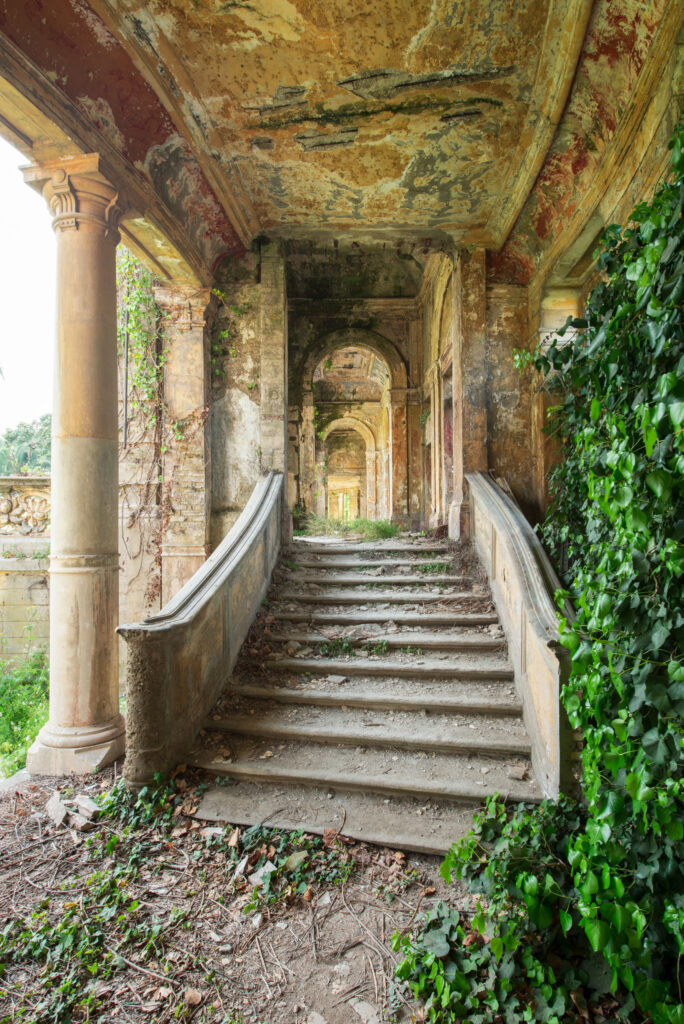
Acque della salute
Æ – Qual’è il tuo rapporto con la decadenza? Quale quello con le rovine? E con l’abbandono?
NB – Non sono interessato al mero abbandono bensì al segno del tempo, alle varie stratificazioni che poi definiscono la decadenza di un ambiente. Le rovine mi affascinano in quanto testimonianze residue dei processi e dei mutamenti della Storia. Rappresentano il luogo di una frattura spazio-temporale, la quale costituisce, con il suo carattere di paradosso, l’essenza ineludibile della poesia della rovina.
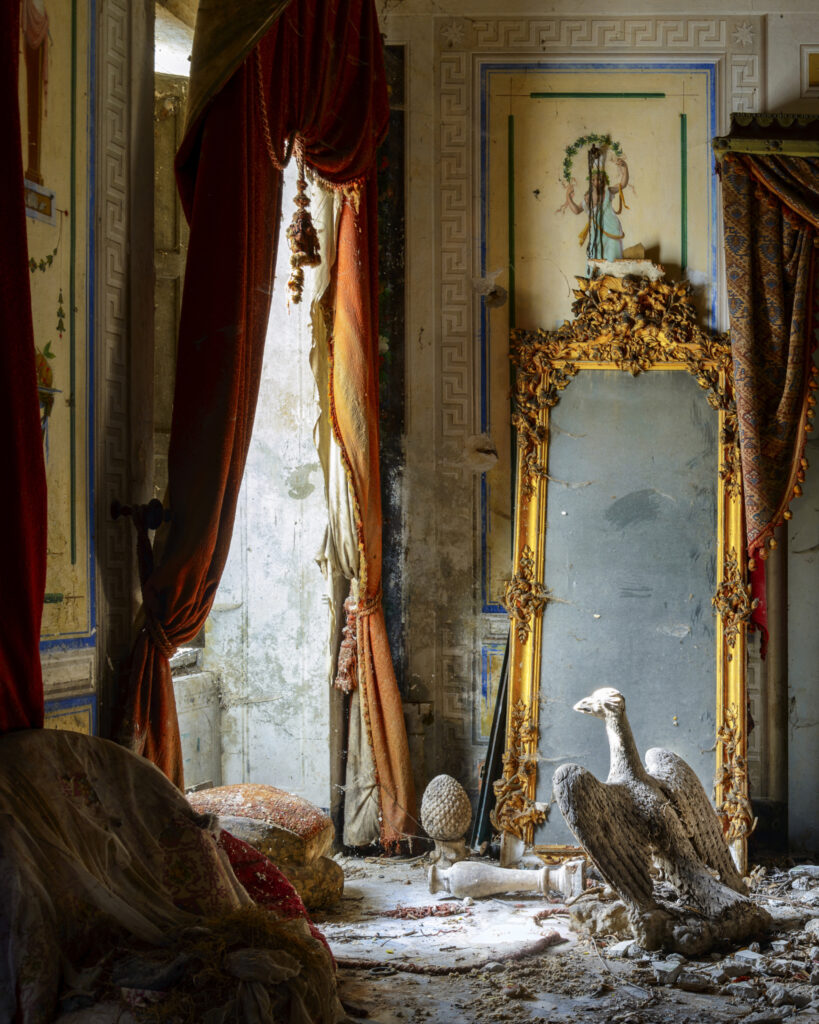
L’ora che volge il disio
Æ – Da dove è partita la scelta o il bisogno di documentare luoghi abbandonati e perché?
NB – Ho studiato Storia all’università e, anche se indirettamente, questo ha sicuramente contribuito alla scelta del soggetto del mio lavoro. La grande passione per i viaggi e una curiosità sconfinata hanno fatto tutto il resto.
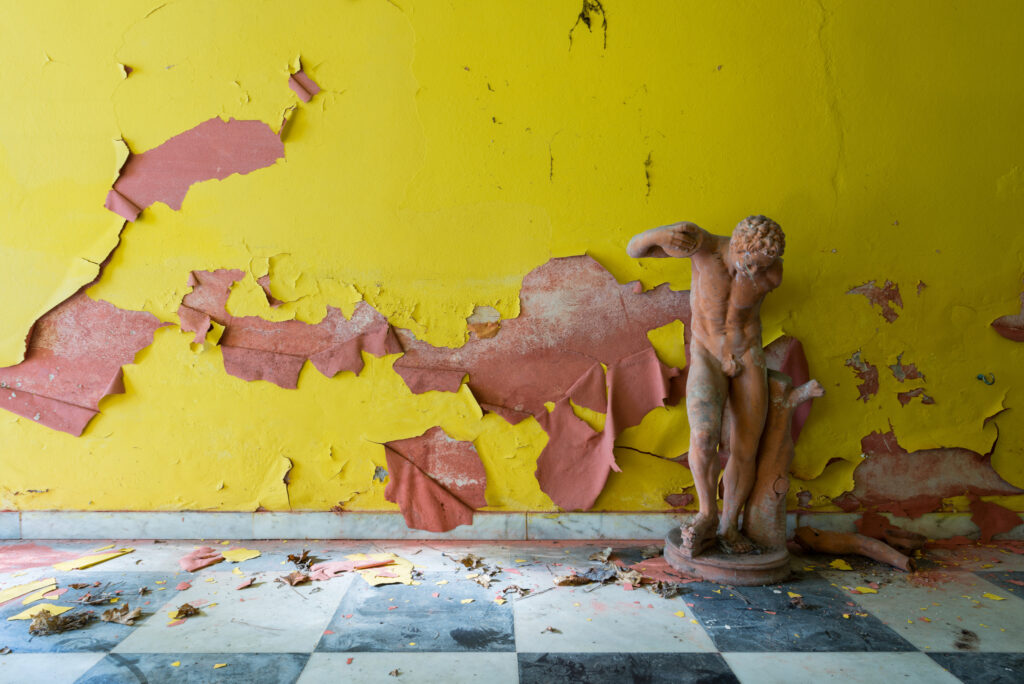
Il paradiso brucia
Æ – Qual’è il tuo pensiero sulla ripetizione?
NB – Quello che pensava Victor Hugo : “Tutta la storia non è che una lunga ripetizione, un secolo plagia l’altro.”
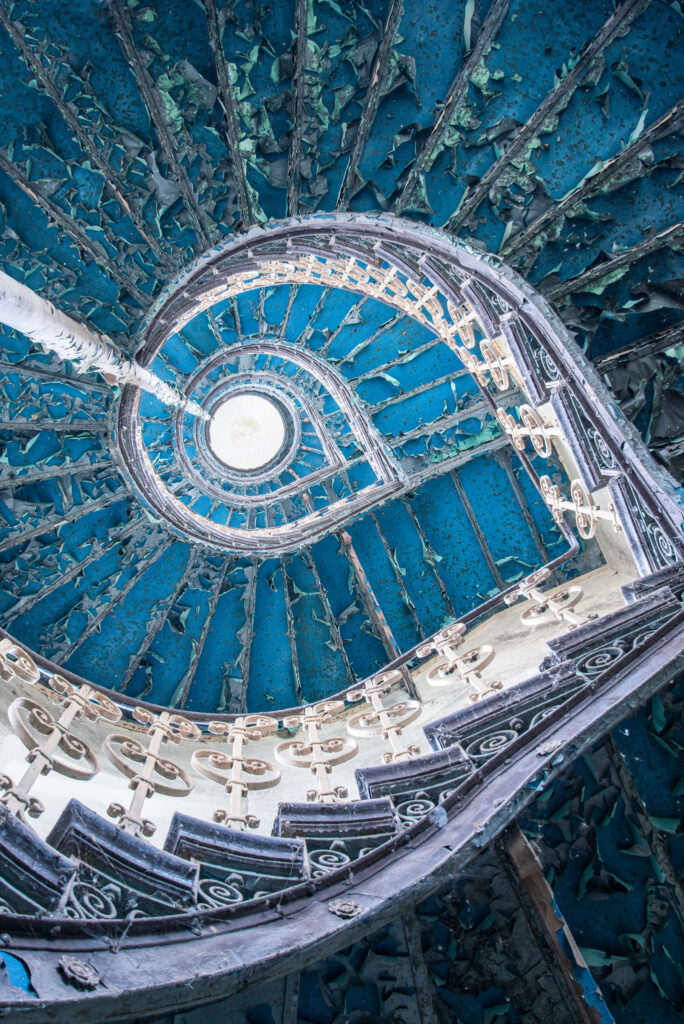
Blue eye
Æ – Quali sono le sensazioni non appena varchi la soglia di un luogo abbandonato?
NB – L’iniziale sensazione di inquietudine che inevitabilmente il genere di questi posti provoca sfuma quasi subito in uno stato di pace e seraficità. Spero sempre di trasmettere queste suggestioni nei miei scatti.
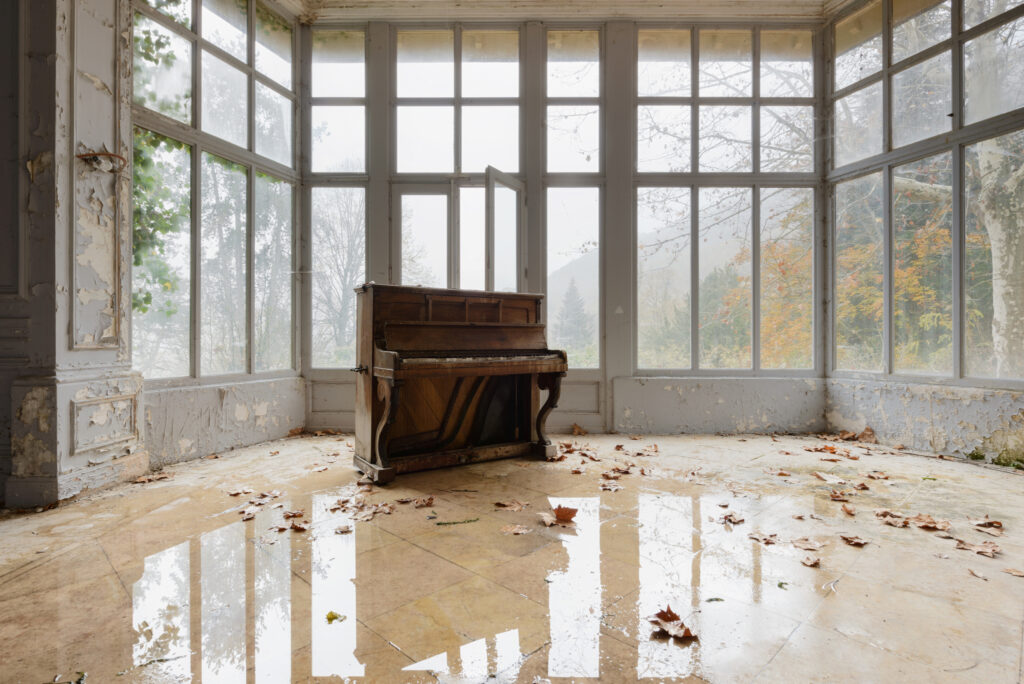
Solo
Æ – Come si sviluppa lo “shooting”?
NB – Prima c’è tutta la fase della perlustrazione, con un misto di ansia e senso di meraviglia. Poi comincio a scattare sapendo benissimo cosa mi interessa e cosa no. Di solito poche inquadrature, non faccio quasi mai reportage completi di un luogo.
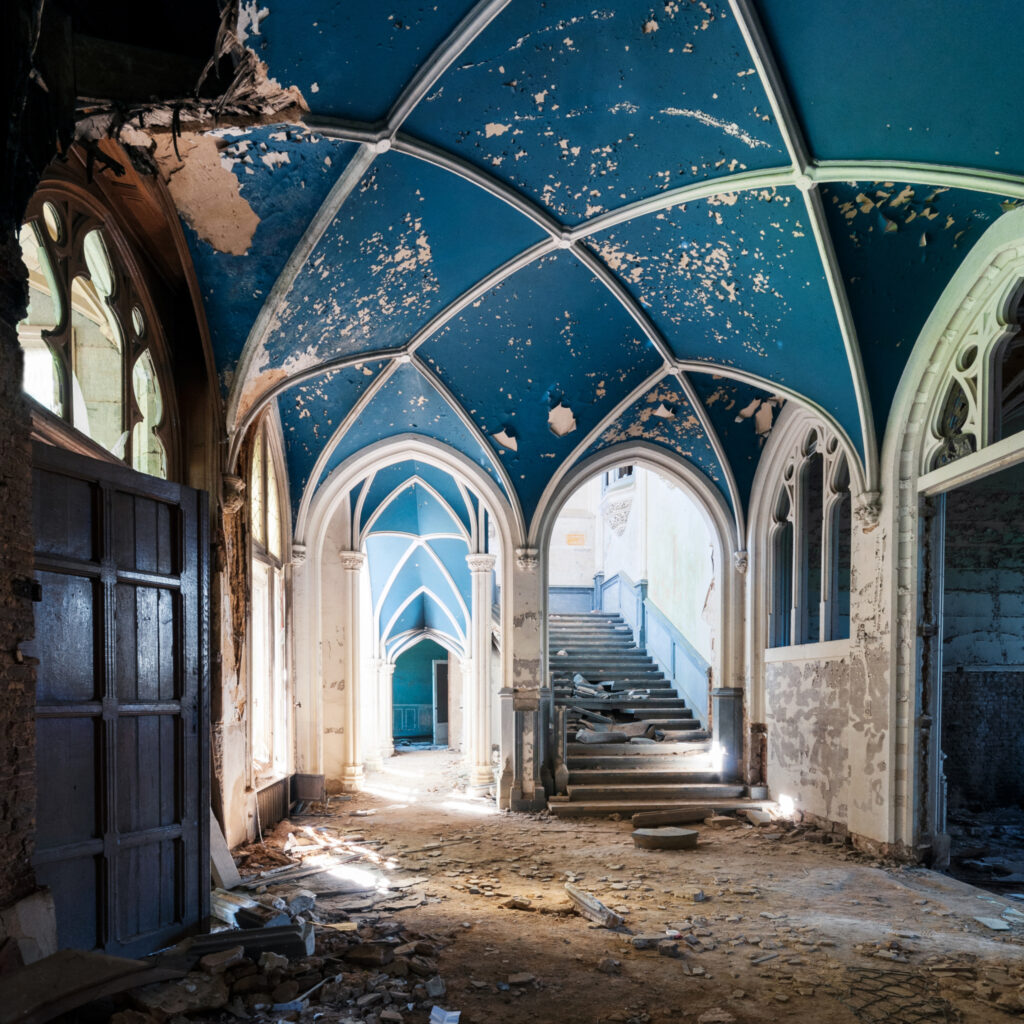
All is violent, all is bright
Æ – Quanto tempo dedichi agli edifici?
NB – Dipende dalle condizioni di luce. Se sono fortunato in meno di un’ora sono fuori. Ma non sempre va così, un paio di anni fa in una chiesa francese ho aspettato circa sette ore prima che il sole mi permettesse di portare a casa lo scatto che volevo.
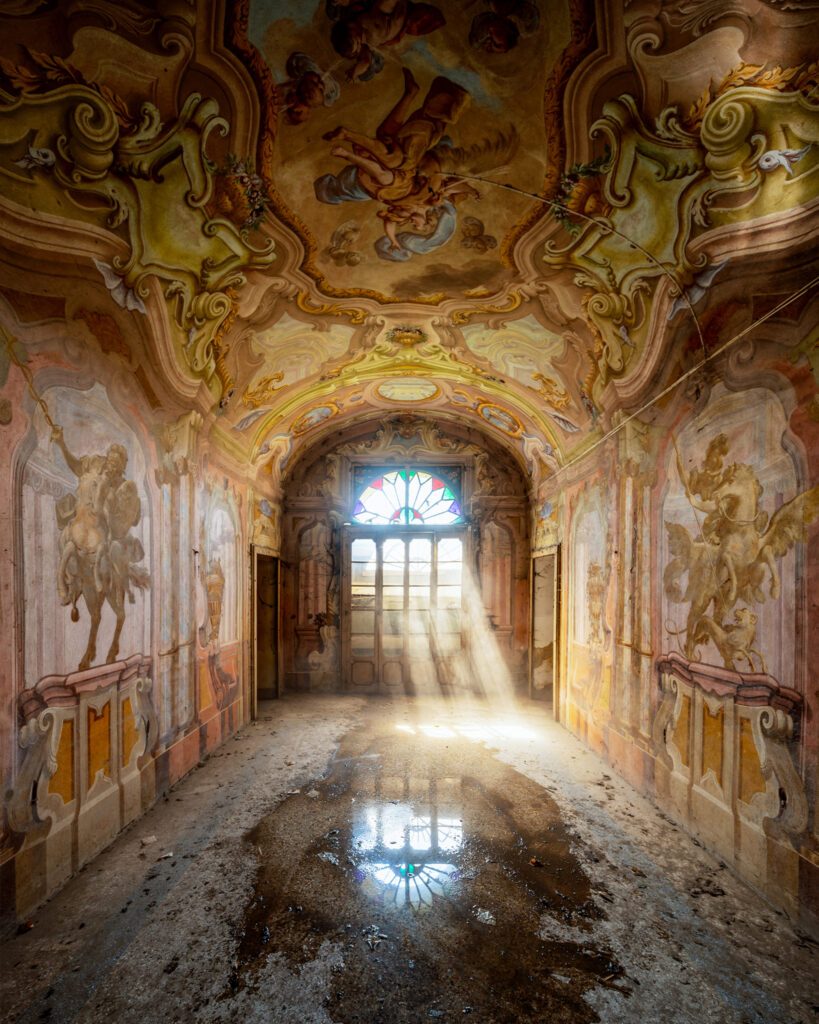
Reverie
Æ – Ti capita mai di uscire da uno spazio abbandonato senza aver scattato nulla?
NB – Sì, capita. In quei casi mi godo l’esplorazione, si trova sempre qualcosa di curioso e interessante.
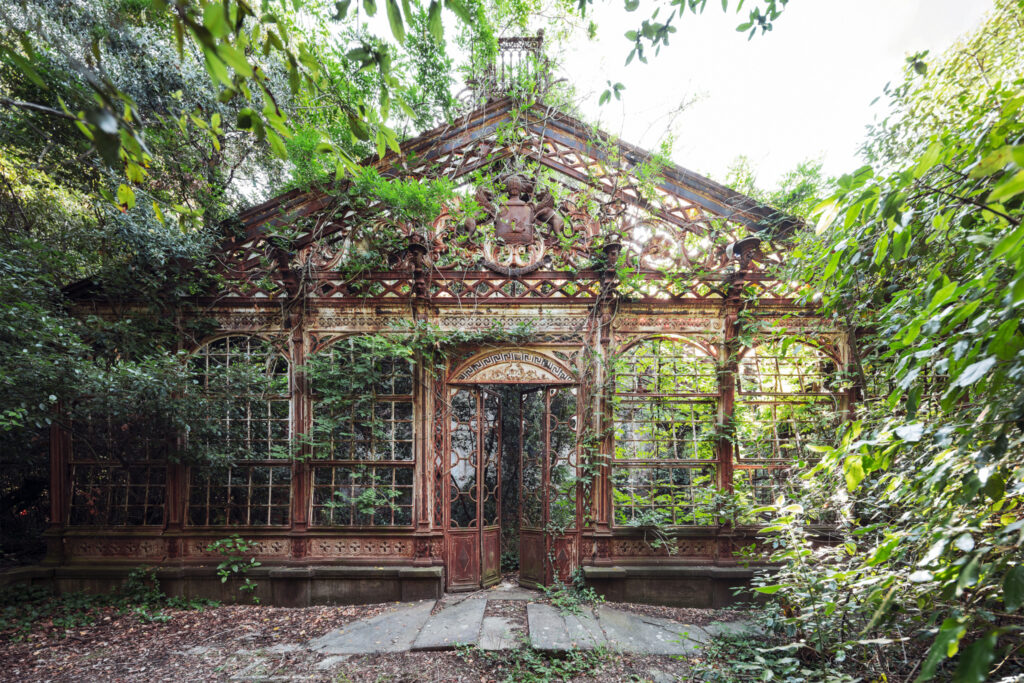
L’architettura del ferro
Æ – Spesso i luoghi abbandonati sono anche proibiti, molte volte proprio perché pericolanti e di conseguenza pericolosi – è sempre possibile o facile entrarvi?
Li trovi sempre abbandonati o sei incappato in divieti?
C’è un sottile velo di adrenalina in questo lavoro?
NB – Tutti i luoghi abbandonati, anche il rudere più scalcinato, hanno un proprietario; quindi trovo sempre un cartello con divieti. L’accesso è spesso rocambolesco : scavalcamenti, arrampicamenti, strisciamenti ed altre acrobazie varie. Ma non porto attrezzi da scasso con me, per quanto sia un intruso, inutile negarlo, provo massimo rispetto per questi posti.
C’è certamente una componente avventurosa in tutto questo, che letteralmente mi fa tornare bambino.
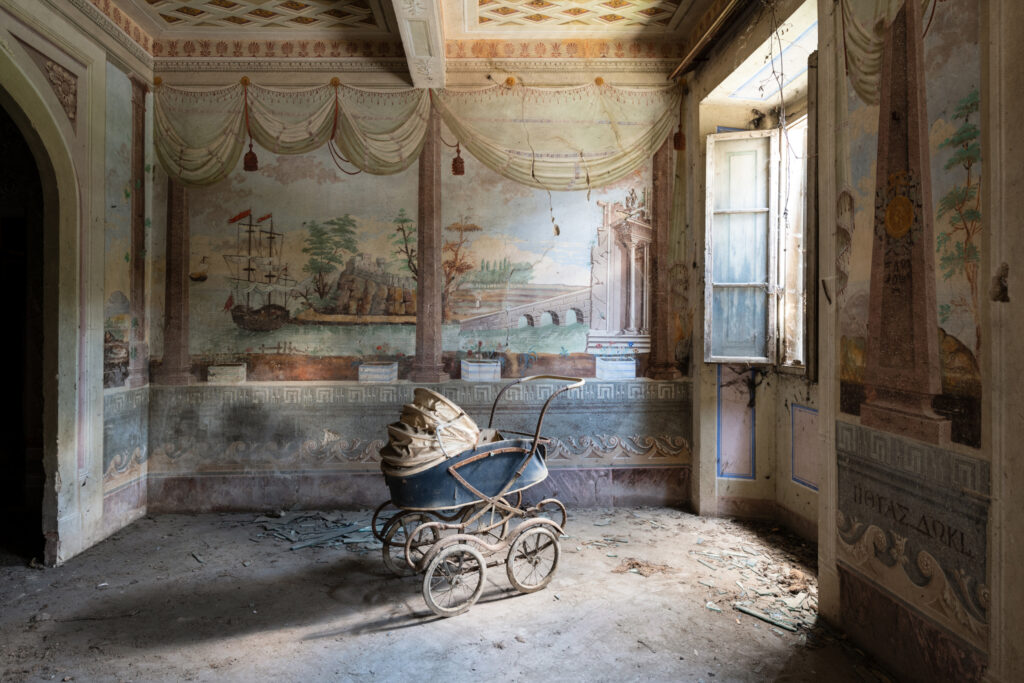
The childhood of a leader
Æ – Le tue fotografie sono esteticamente belle e tecnicamente perfette, ma oltre a questo c’è ovviamente di più – c’è la parte emozionale – quando “sforni” un’immagine o concludi una serie fotografica, le sensazioni che provi a riguardare i luoghi in 2D rimangono le medesime del momento dello scatto?
NB – Quello che fotografo si trasforma continuamente, il tempo divoratore o scelte umane scellerate spesso sentenziano la scomparsa totale di questi luoghi. Le mie foto quindi fanno parte di un catalogo sentimentale che mi riportano sempre alle sensazioni provate al momento dello scatto, che rimane unico.
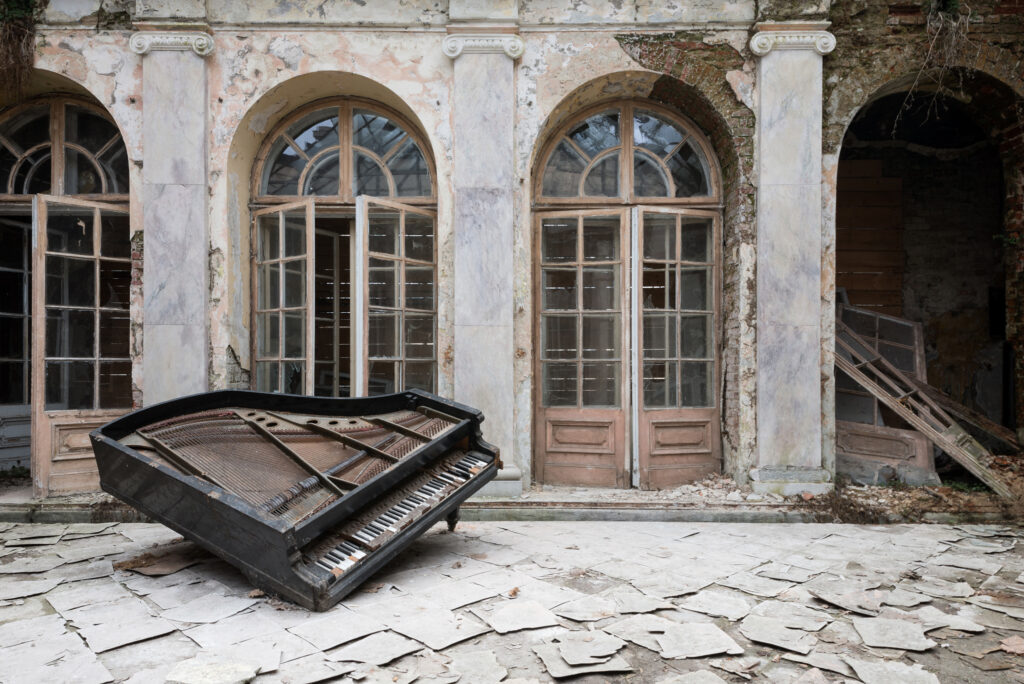
Melancholia
Æ – Il tuo lavoro è diventato anche una mappatura esaustiva di un ampio capitolo di architettura – ciò ha mai dato seguito a un processo di recupero e riqualificazione di edifici storici?
NB – Non ancora ma presto si concretizzerà un progetto che mi vede coinvolto in cui verranno illustrate le fasi precedenti al recupero di un sito artistico importante.
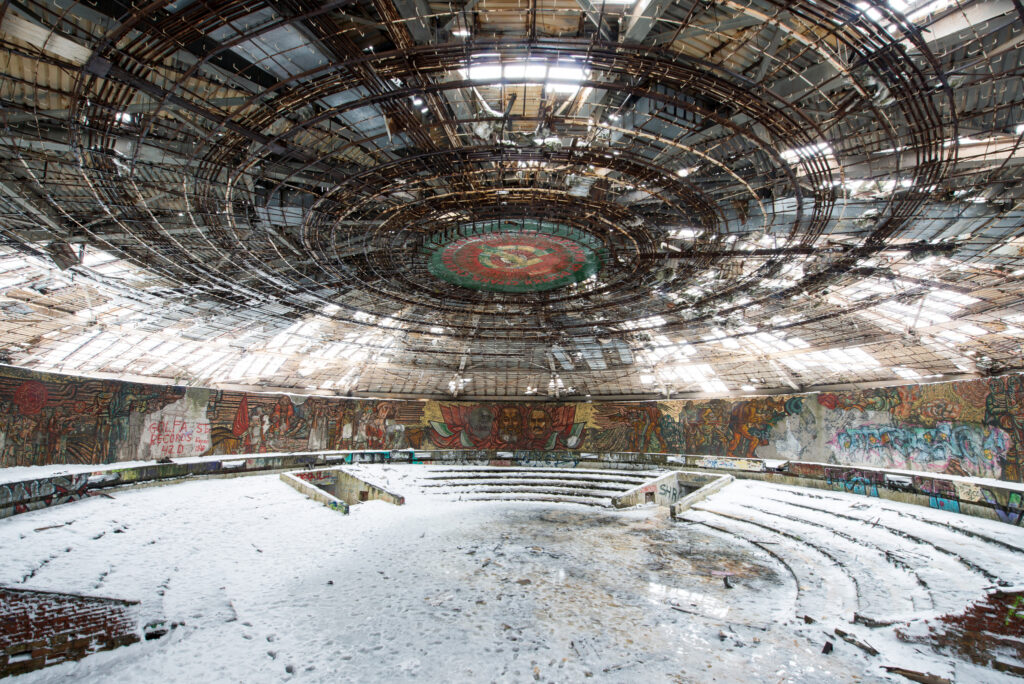
The short 20th century
Æ – La tua foto preferita se ne hai una e perché?
NB – Non ho una foto preferita perchè di solito sono molto severo con quello che ho prodotto nel passato recente e quindi il giudizio sul mio lavoro cambia continuamente.
Æ – La canzone o una musica che ci abbineresti?
NB – Alcuni pezzi estatici della band islandese dei Sigur Rós.
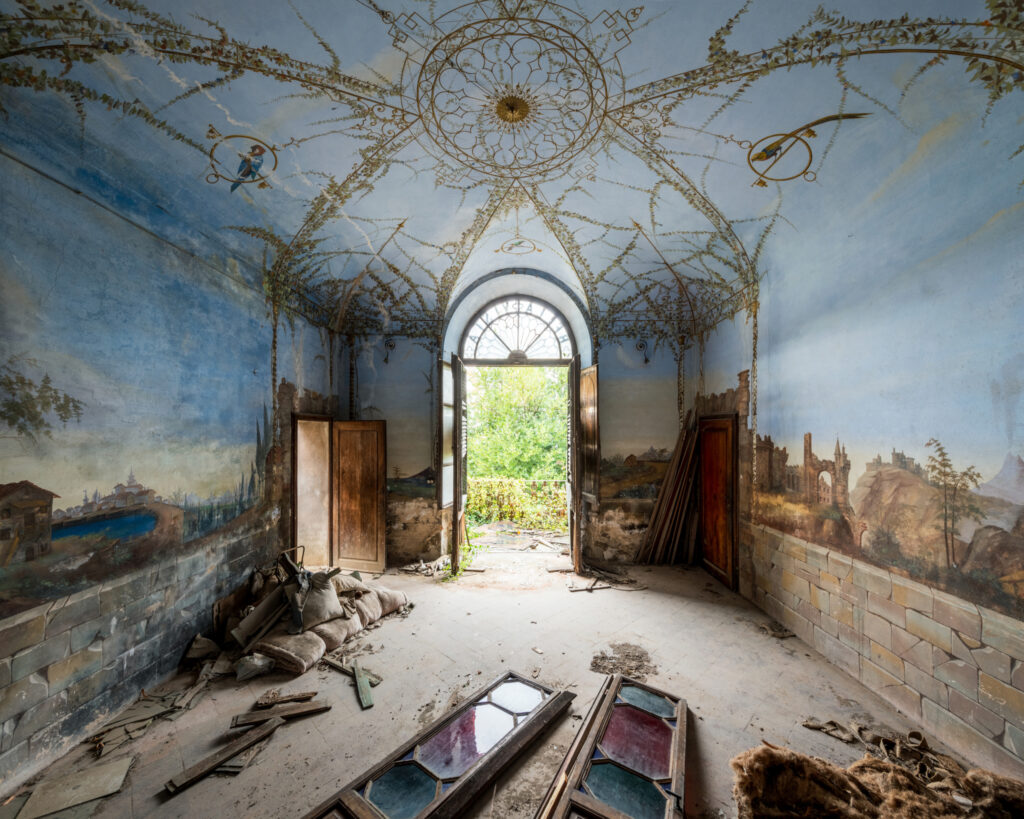
Addio a Villa Bellavista
Æ – Un ricordo particolare legato ad un progetto?
NB – La mia esperienza in Estonia, in occasione della mia personale curata dal museo di Pärnu.
Æ – Il tuo ultimo progetto? / Progetti futuri?
NB – In estate sono stato ospite del Brescia Photo Festival, con la mostra “Sipario”, dedicata all’abbandono dei luoghi di cultura. Per il futuro sono in ballo diverse collaborazioni e pubblicazioni a cui mi sto dedicando proprio in questi giorni.
nicolabertellotti.com
Æ – How and when did your photographic journey begin?
NB – It started for fun 15 years ago. I bought my first SLR to photograph a puppet of a doorstop penguin travelling around the world. I am totally self-taught, I just learned by making mistakes again and again.

Nostalgia dell’altrove
Æ – What do you aim to communicate with your shots? Or better, how important is the personal and creative research and how much the documentation of the state of abandonment of a vast and priceless architectural heritage?
NB – My aim is to reveal this invisible geography that is all around us. Every day we all walk with great indifference past places that still hide so much beauty and real treasures. Documentation is fundamental; it is the story that these buildings tell that moves me.

Red elegy
Æ – How do you find the places that you then go on to capture in your photography?
NB – I find them with obsessive web searches and with the help of some trusted contacts around Europe. Then it sometimes rarely happens that I stumble upon an interesting place while travelling, in those cases the satisfaction of the discovery is doubled.

Acque della salute
Æ – What is your relationship with decay? With ruins? And with abandonment?
NB – I am not interested in mere abandonment but in the signs of time, in the various layers that then define the decay of an environment. Ruins fascinate me as residual testimonies of the processes and changes in history. They represent the site of a space-time fracture, which constitutes, with its paradoxical character, the inescapable essence of the poetry of ruin.

L’ora che volge il disio
Æ – Where did the choice or the need to document abandoned places come from, and why?
NB – I studied history at university and, even if indirectly, this certainly contributed to my choice of subject for my work. A great passion for travel and a boundless curiosity did all the rest.

Il paradiso brucia
Æ – What are your thoughts on repetition?
NB – What Victor Hugo thought: “The whole of history is but a long repetition, one century plagiarizes the next.”

Blue eye
Æ – What are your feelings as soon as you cross the threshold of an abandoned place?
NB – The initial feeling of uneasiness that these types of place inevitably provokes almost immediately fades into a state of peace and serenity. I always hope to convey this suggestivity in my shots.

Solo
Æ – How do you approach the “shooting”?
NB – First there is the whole patrol phase, with a mixture of anxiety and a sense of wonder. Then I start taking pictures knowing full well what interests me and what doesn’t. Usually just a few shots, I hardly ever do a complete reportage of a place.

All is violent, all is bright
Æ – How much time do you dedicate to the buildings?
NB – It depends on the light conditions. If I’m lucky I’m out in less than an hour. But that’s not always the case, a couple of years ago in a French church I waited about seven hours before the sun would allow me to bring home the shot I wanted.

Reverie
Æ – Do you ever leave an abandoned space without having taken any image?
NB – Yes, it happens. In those cases I enjoy the exploration, you always find something curious and interesting.

L’architettura del ferro
Æ – Often abandoned places also have prohibited entry, many times precisely because they are unsafe and consequently dangerous – is it always possible and easy to enter?
Do you always find them abandoned or have you run into prohibitions?
Is there a subtle line of adrenaline in your work?
NB – All abandoned places, even the most dilapidated ruins, have an owner; so I always find a sign prohibiting entry. Access is often daring: climbing, clambering, sliding and other various acrobatics. But I don’t bring burglary tools with me, no matter how much of an intruder I am, and it’s pointless to deny it, I have the utmost respect for these places. There is certainly an adventurous component to all of this, one which literally makes me feel like a child again.

The childhood of a leader
Æ – Your photographs are aesthetically beautiful and technically perfect, but in addition to this there is obviously more – there is the emotional element – when you “bring out” an image or finish a photographic series, do the feelings as you try to look at the places in 2D remain the same as they were in the moment of the shot?
NB – What I photograph is continually transformed, the erosion of time or wicked human choices often sentence these places to total disappearance. My photos are therefore part of a sentimental catalogue that always bring me back to the sensations I felt at the moment of shooting, which remains unique.

Melancholia
Æ – Your work has also become an exhaustive mapping of a large chapter of architecture. Has this ever resulted in a process of recovery and redevelopment of historic buildings?
NB – Not yet, but soon a project will take shape that I am involved in which will illustrate the phases preceding the recovery of an important artistic site.

The short 20th century
Æ – What is your favourite among your own photos, if you have one and why?
NB – I do not have a favourite photo because I am usually a very harsh critic of what I have produced in the recent past and therefore my judgment of my own work changes constantly.
Æ – Is there a song or piece of music that you would match it with?
NB – Some ecstatic pieces from Icelandic band Sigur Rós.

Addio a Villa Bellavista
Æ – Do you have a special memory linked to a project?
NB – My experience in Estonia, on the occasion of my personal exhibition curated by the Pärnu museum.
Æ – What about your most recent project? / Future projects?
NB – In the summer I was a guest of the Brescia Photo Festival, with the exhibition “Sipario”, dedicated to the abandonment of cultural sites. For the future, several collaborations and publications are in the air, which I am dedicating myself to at this time.
nicolabertellotti.com
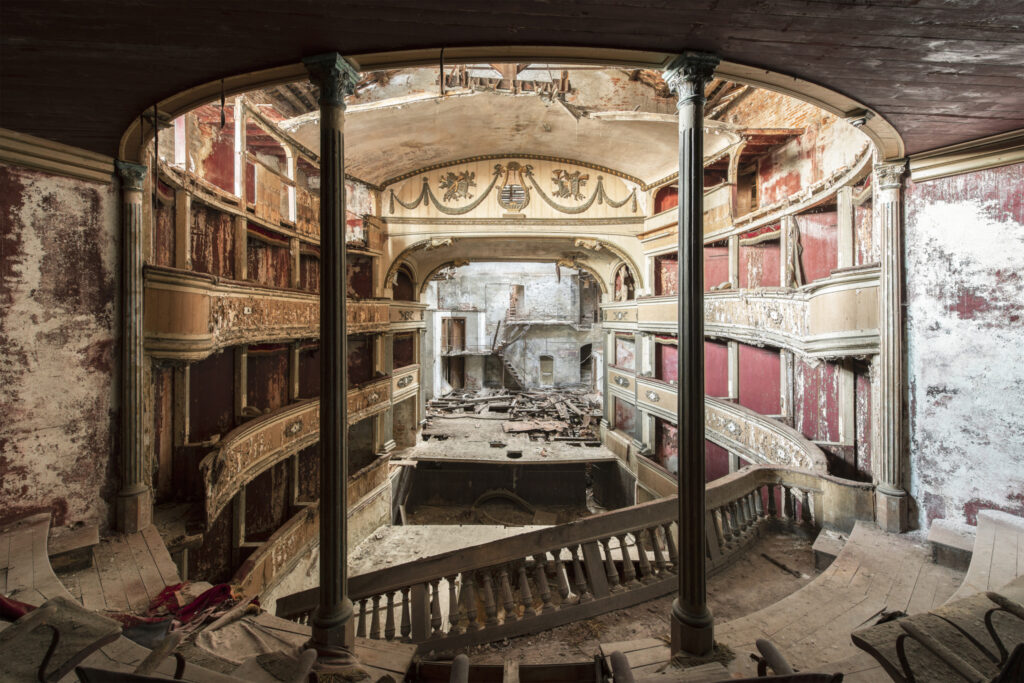
La causa di un disordine qualsiasi

